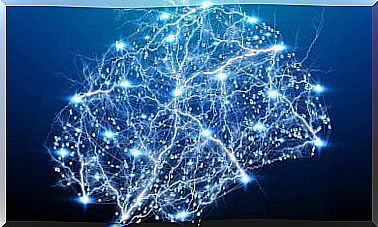The Maslach Triad, What Does It Consist Of?

Cristina Maslach is an authority on the so-called burnout syndrome or professional burnout syndrome, a condition that could be literally translated as “burning” at work. This psychologist proposed a series of criteria that are known as Maslach’s triad and that describe the basic symptoms of job burnout.
Maslach’s triad is made up of three elements: emotional fatigue or exhaustion; lack of efficiency or decline in performance and achievement; and depersonalization at work. Cristina Maslach also developed a universal questionnaire to detect the presence of burnout syndrome.
It should be noted that burnout syndrome is not incorporated in the DSM (Diagnostic and Statistical Manual of Mental Disorders), but within the community of psychologists and social workers, among others, it is recognized as a real state and differentiated from others. Let’s take a closer look at the elements of Maslach’s triad.

Fatigue, the first element in Maslach’s triad
Although more than 100 symptoms associated with Burnout Syndrome have been reported, fatigue is considered to be the most relevant. It is also the main base of the Maslach triad. The fatigue that is talked about in this model is mainly emotional.
What there is in this case is an intense and persistent feeling of being emotionally drained. The person feels that they do not have the emotional resources to face their work and that the demands of it exceed them. Feelings of helplessness and hopelessness predominate, in relation to work in particular, but also in relation to life in general.
The feeling appears that any professional demand is excessive. Likewise, there is great demotivation and a continuous feeling of frustration. Although the core of this fatigue is emotional, there is also physical fatigue as such.
Inefficiency, an obvious consequence
The second element in the Maslach triad is inefficiency or decline in job performance and achievement. In this case, a personal perception also predominates, even more than real events. The person feels incompetent and inadequate for the tasks entrusted to him.
There is also no sense of personal gratification from work. Basically one works by inertia and the result of the work is evaluated as not very valuable. There is a feeling of loss of efficiency, accompanied by progressive difficulties in concentrating and decreased ability to memorize.
Burnout syndrome is more common in competitive environments, where “positive attitude” or interpersonal relationships are highly valued. That is why it is not uncommon for this feeling of inefficiency to be concealed at first with an excess of willingness to work, greater dedication and more apparent enthusiasm. This makes the situation worse.
It is very common for people in this state to have more absenteeism. There is a decrease in immune resistance and, therefore, a higher incidence of colds and other pathologies. Similarly, lack of energy and problems with sleep.

Depersonalization at work
Depersonalization at work refers to a state in which there is isolation and avoidance of contact with colleagues. An emotional attitude of detachment, coldness and rejection predominates. Contemptuous attitudes towards others, irritability and lack of tolerance are also present.
This element of the Maslach triad talks about the rejection of social relationships. In this state, a person avoids at all costs extra-work activities, and even work activities that involve meeting with others. The person with burnout syndrome also makes excuses for missing work.
The depersonalization referred to in Maslach’s triad is not the same as that enshrined in psychopathology manuals. In this case, contact with reality is not lost, from the mental point of view, but there is an isolation from that reality that is perceived in a distorted, but not delusional way.
All these signs appear more frequently in health professionals, teachers, security personnel and in almost all professions that involve direct and continuous contact with the recipients of a given service. The best way to end this problem is by adopting smart and tailored prevention measures.








